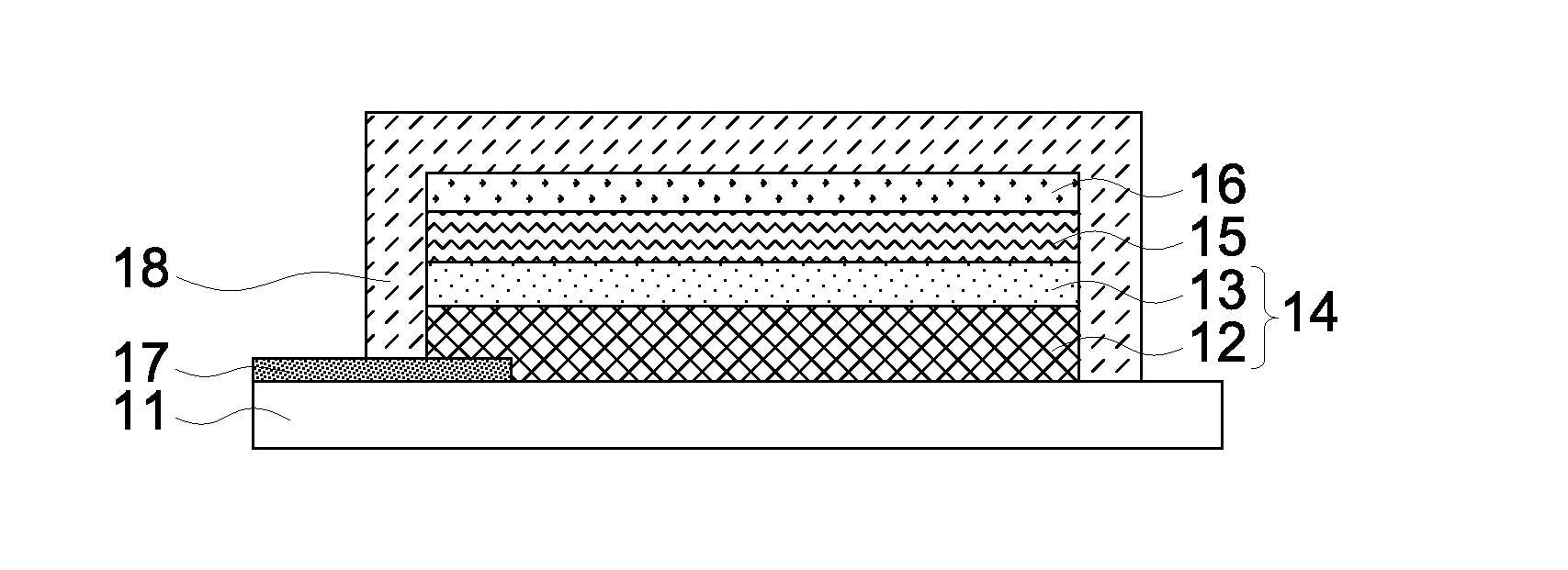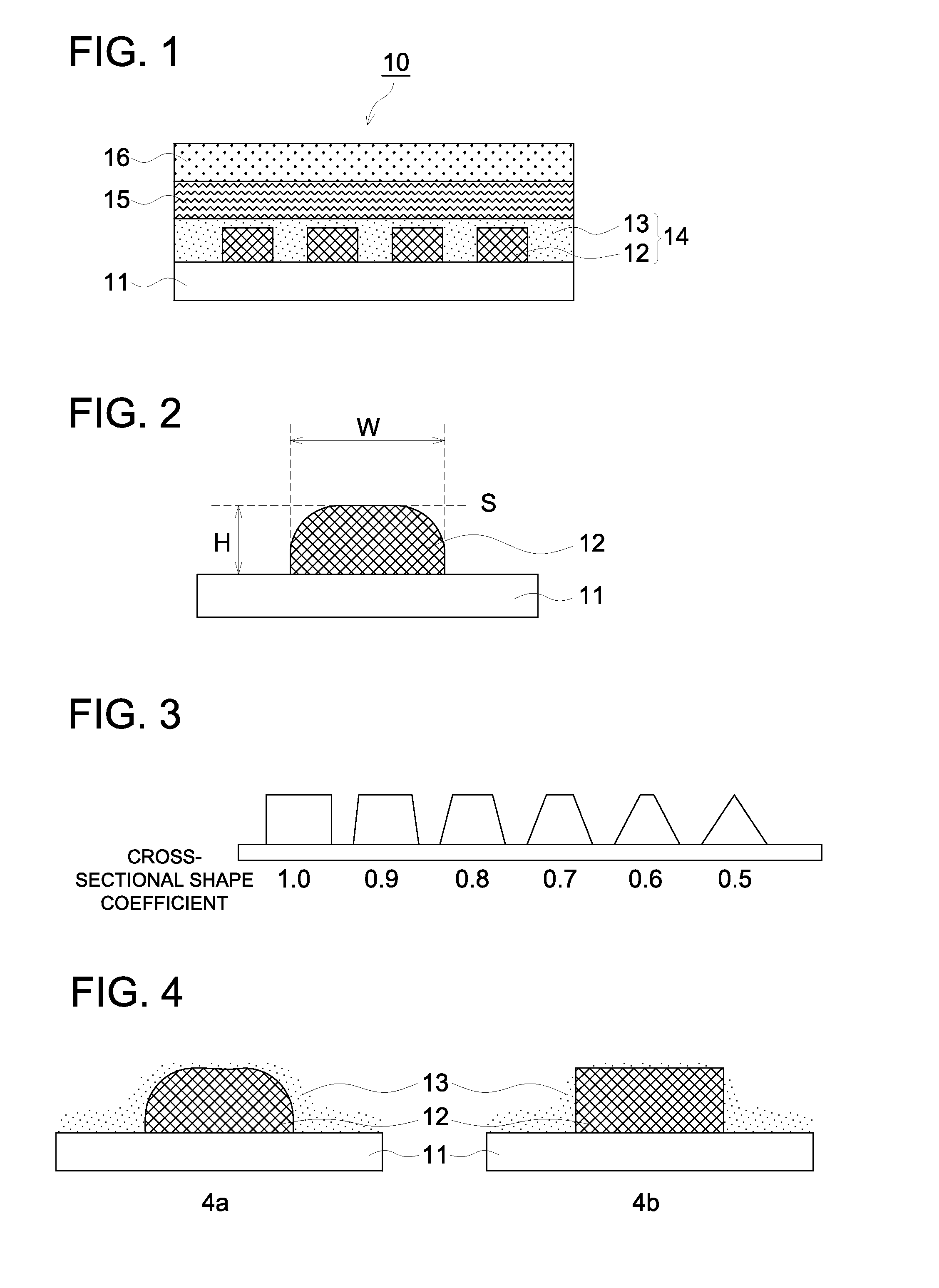Transparent electrode and organic electronic element using same
- Summary
- Abstract
- Description
- Claims
- Application Information
AI Technical Summary
Benefits of technology
Problems solved by technology
Method used
Image
Examples
synthetic example 1
Synthesis of Methoxy Capped Oligo(Ethylene Glycol) Methacrylate
[0118]In a 50 ml three necked flask were placed 7.3 g (35 mmol) of 2-bromoisobutyryl bromide,
[0119]2.48 g (35 mmol) of triethylamine and 20 ml of THF. The inner temperature of the solution was kept to be 0° C. with an ice bath. Into the solution was dropwise added 10 g (23 mmol) of oligo(ethylene glycol)(the number of ethylene glycol being 7 to 8, made by Laporte Specialties Co., Ltd.) as 33% of THF solution in an amount of 30 ml. After stirring the solution for 30 minutes, the temperature of the solution was raised to room temperature, and further the solution was stirred for 4 hours. THF was removed under reduced pressure with a rotary evaporator. The residue was dissolved in ethyl ether and transferred into a separation funnel. Water was added in the separation funnel to wash the ether layer. After repeating this process 3 times, the ether layer was dried with MgSO4. Ether was removed under reduced pressure with a rot...
synthetic example 2
[0141]The thickness of second conductive layer of Electrodes 1-30 and the used conductive polymers and non-conductive polymers are shown in Table 1. Electrodes 16, 20, 21, 24, 26 and 28 was provided with a third conductive layer which was prepared on a PET film with a silver nanowire dispersion liquid coated with a spin coater so that the coating amount of silver nanowires became 0.06 g / m2 followed by drying. Then a first and a second conductive layer were formed thereon.
[0142]The shape evaluation of the first conductive layer was done using a laser microscope. The height, the width and the cross-sectional shape of the fine wire were measured and they were evaluated as an average value of 20 points.
[0143]There were evaluated conductivity and transparency of the first conductive layer, and the second conductive layer and the portion which was laminated with the third conductive layer according to the following.
(Transparency)
[0144]Total light transmissivity was measured using HAZE MET...
PUM
 Login to View More
Login to View More Abstract
Description
Claims
Application Information
 Login to View More
Login to View More - R&D
- Intellectual Property
- Life Sciences
- Materials
- Tech Scout
- Unparalleled Data Quality
- Higher Quality Content
- 60% Fewer Hallucinations
Browse by: Latest US Patents, China's latest patents, Technical Efficacy Thesaurus, Application Domain, Technology Topic, Popular Technical Reports.
© 2025 PatSnap. All rights reserved.Legal|Privacy policy|Modern Slavery Act Transparency Statement|Sitemap|About US| Contact US: help@patsnap.com



